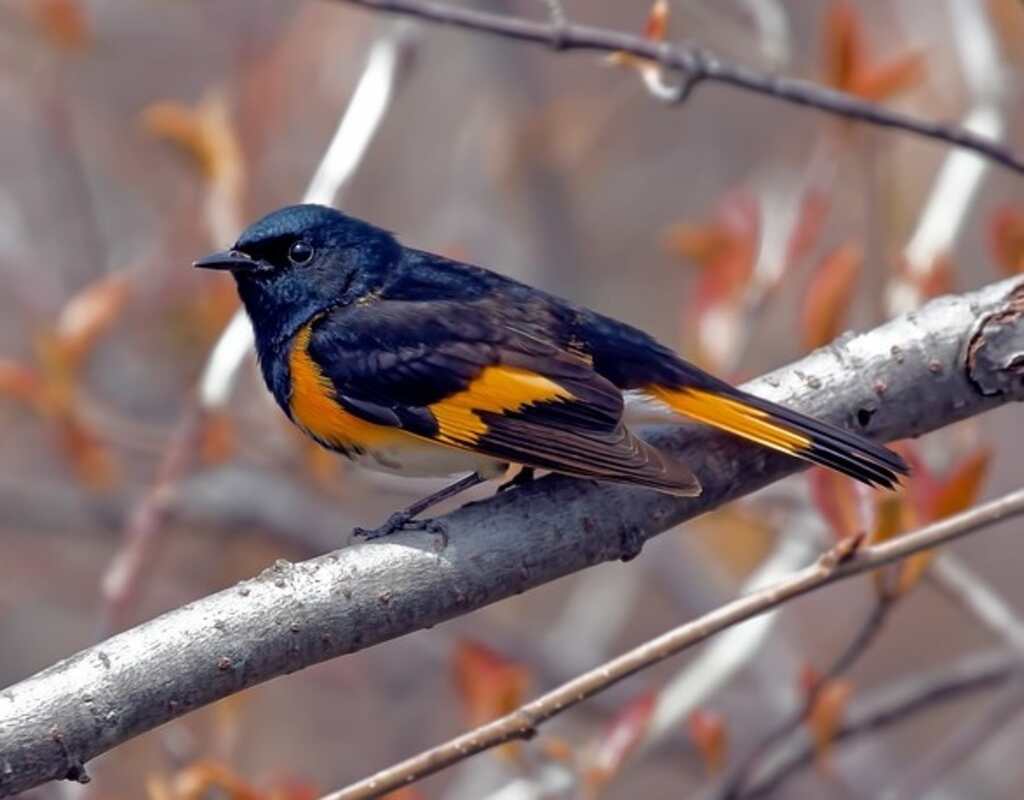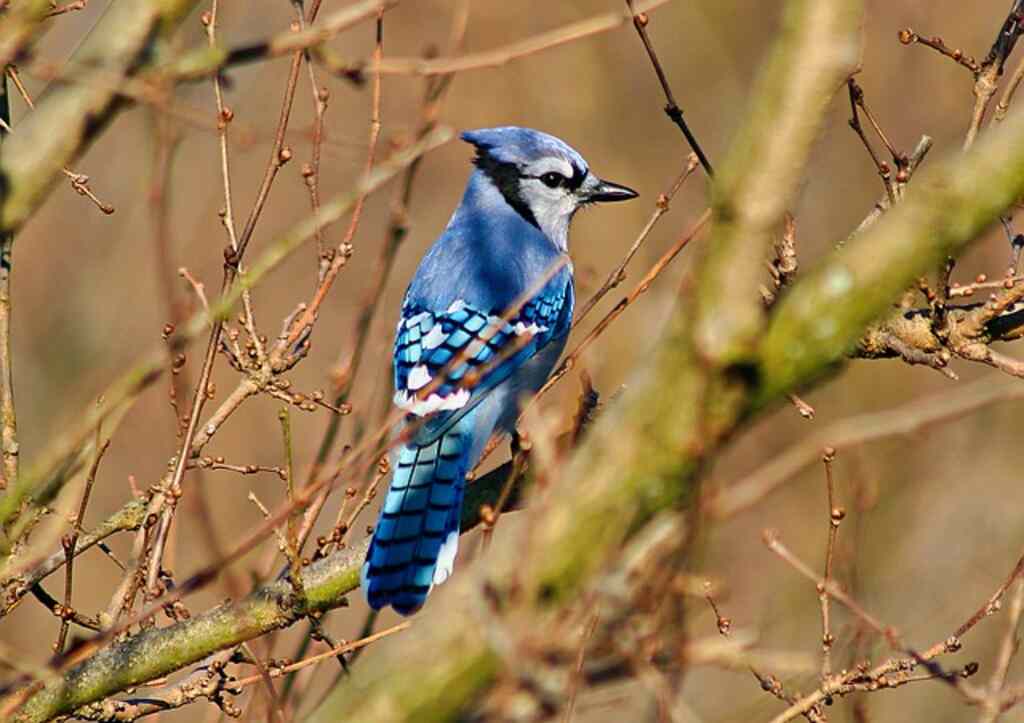South Carolina is a haven for birdwatching enthusiasts, with its diverse range of habitats attracting a wide variety of bird species. Whether you’re a seasoned birder or just starting out, there are many top birdwatching hotspots in South Carolina that offer fantastic opportunities to observe and appreciate these feathered creatures.
In this article, we will explore the top birdwatching locations in South Carolina, including Huntington Beach State Park, Francis Beidler Forest, Savannah National Wildlife Refuge, Botany Bay Plantation Heritage Preserve, Congaree National Park, Cape Romain National Wildlife Refuge, Lake Jocassee, and Santee National Wildlife Refuge.
Table of Contents
- 1 Key Takeaways:
- 2 Top Birdwatching Hotspots In South Carolina
- 3 Exploring South Carolina’s Ecological Diversity
- 4 Huntington Beach State Park: A Birdwatcher’s Paradise
- 5 Francis Beidler Forest: A Sanctuary for Birds and Birdwatchers
- 6 Savannah National Wildlife Refuge: A Haven for Waterbirds
- 7 Botany Bay Plantation Heritage Preserve: A Unique Birding Experience
- 8 Congaree National Park: Where Birds and Wilderness Meet
- 9 Cape Romain National Wildlife Refuge: A Coastal Birdwatching Haven
- 10 Lake Jocassee: A Scenic Birding Destination in the Upstate
- 11 Santee National Wildlife Refuge: A Birdwatcher’s Retreat
- 12 Conclusion
- 13 FAQs: Top Birdwatching Hotspots In South Carolina
- 13.1 What are the top birdwatching hotspots in South Carolina?
- 13.2 Why is South Carolina a great destination for birdwatching?
- 13.3 What bird species can be observed at Huntington Beach State Park?
- 13.4 What makes Francis Beidler Forest a sanctuary for birds and birdwatchers?
- 13.5 What can be seen at Savannah National Wildlife Refuge?
- 13.6 How is Botany Bay Plantation Heritage Preserve a unique birding experience?
- 13.7 What makes Congaree National Park a must-visit birdwatching destination?
- 13.8 Why is Cape Romain National Wildlife Refuge a coastal birdwatching haven?
- 13.9 What bird species can be observed at Lake Jocassee?
- 13.10 Why is Santee National Wildlife Refuge a birdwatcher’s retreat?
- 14 Author
Key Takeaways:
- South Carolina is a great place for birdwatching, with a diverse range of habitats and bird species.
- There are many top birdwatching hotspots in South Carolina, including state parks, wildlife refuges, and preserves.
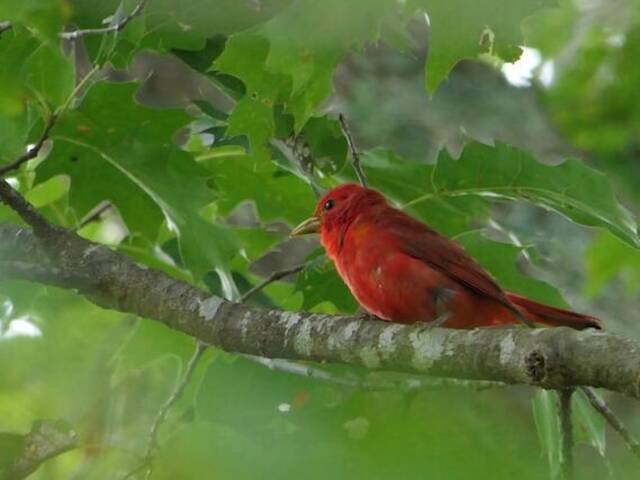
Top Birdwatching Hotspots In South Carolina
Some of the top birdwatching hotspots in South Carolina include Huntington Beach State Park, Francis Beidler Forest, and Lake Murray. These areas offer a variety of habitats and bird species to observe and enjoy, including owls, woodpeckers, warblers, and more.
It’s important to research and plan your birdwatching trip in advance, as some hotspots may have seasonal closures or limited access. With the right preparation, you can enjoy some of the best birdwatching in the country right here in South Carolina.
Exploring South Carolina’s Ecological Diversity
South Carolina is home to a diverse range of habitats, from coastal marshes and wetlands to sprawling forests. These habitats attract a wide variety of bird species, making South Carolina a top destination for birdwatching enthusiasts.
The state boasts over 400 bird species, including the rare and endangered red-cockaded woodpecker, brown-headed nuthatch, and Bachman’s sparrow. No matter where you go in South Carolina, you’re bound to spot some remarkable avian fauna.
Some of the best birdwatching spots in South Carolina are located in these diverse habitats, providing bird enthusiasts with ample opportunities to spot some truly unique species.
Huntington Beach State Park: A Birdwatcher’s Paradise
Huntington Beach State Park is a stunning destination for birdwatching enthusiasts in South Carolina. With over 300 species of birds reported in the park, it is no surprise that it has been designated as a state birding trail. The park is home to several different habitats including salt marshes, freshwater ponds, forests, and beaches, making it a diverse and exciting location for birdwatching.
Visitors to the park can expect to see a wide range of birds, including migratory songbirds, shorebirds, wading birds, and raptors. The park is particularly famous for its resident population of painted buntings, which are often spotted near the park’s entrance. Other notable species that birdwatchers can look out for include great blue herons, ospreys, and brown pelicans.
| Bird species commonly spotted at Huntington Beach State Park | Description |
|---|---|
| Painted bunting | A small, brightly colored bird that is often seen near the park’s entrance. |
| Great blue heron | A large wading bird with a distinctive blue-gray plumage and long legs. |
| Osprey | A bird of prey that can often be seen hovering over the park’s ponds and marshes. |
| Brown pelican | A large seabird with brown and white plumage that is frequently seen along the park’s beaches. |
Birdwatchers can explore the park’s various trails and boardwalks to get the best views of the park’s birdlife. Some of the most popular birding spots within the park include the causeway, where visitors can see wading birds and shorebirds, and the Halyburton boardwalk, where visitors can see a variety of songbirds and woodpeckers.
Unique Features of Huntington Beach State Park
“Huntington Beach State Park is one of the few locations in the United States where visitors can regularly see painted buntings, making it a must-visit destination for birdwatchers.”
In addition to its diverse bird population, Huntington Beach State Park offers several unique features that make it a popular destination for birdwatchers. One of the most notable features of the park is Atalaya, a historic castle that was once the winter home of industrialist Archer Huntington and his wife, Anna Hyatt Huntington. Visitors can explore the castle’s grounds and gardens, which offer excellent opportunities for birdwatching.
The park also has a nature center, which provides educational programming on the park’s flora and fauna. The nature center features exhibits and displays on the park’s bird species, and birdwatchers can pick up a checklist of birds commonly seen in the park from the center.
Overall, Huntington Beach State Park is a must-visit destination for birdwatchers in South Carolina. With its diverse habitats and wide variety of bird species, it is a paradise for anyone interested in birdwatching.
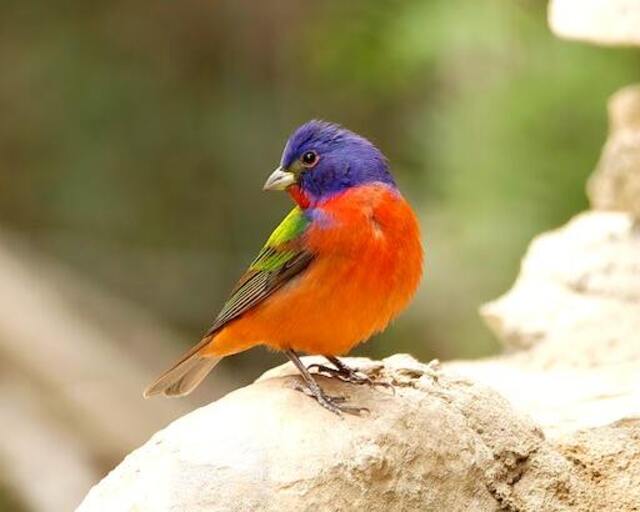
Francis Beidler Forest: A Sanctuary for Birds and Birdwatchers
Located in Four Holes Swamp, Francis Beidler Forest is a unique birdwatching location in South Carolina. Its 16,000-acre virgin cypress-tupelo swamps are home to over 160 species of birds, including Prothonotary Warblers, Swallow-tailed Kites, and Red-shouldered Hawks.
The forest boasts several trails, including the 1.75-mile boardwalk trail that offers birdwatchers a close-up view of the forest’s unique scenery and wildlife. Visitors can also experience a guided bird walk, where expert guides point out various bird species and provide insider tips to enhance your birdwatching experience.
| Location | Hours | Admission |
|---|---|---|
| 336 Sanctuary Road, Harleyville, SC 29448 | 9:00 AM – 5:00 PM (Monday-Saturday) | $10 per person |
| 1:00 PM – 5:00 PM (Sunday) |
Francis Beidler Forest is also home to the world’s largest population of nesting Prothonotary Warblers, making it a popular destination for birdwatchers who want to spot these vibrant yellow birds.
Don’t forget to bring your binoculars and camera to capture the beauty of Francis Beidler Forest, a sanctuary for birds and birdwatchers alike!
Savannah National Wildlife Refuge: A Haven for Waterbirds
Located along the Savannah River in the southern part of South Carolina, Savannah National Wildlife Refuge is a must-visit destination for birdwatching enthusiasts. The refuge is home to a diverse array of bird species, but it is particularly renowned for its abundance of waterbirds.
Visitors to the refuge can observe a variety of herons, egrets, and ducks, as well as raptors such as bald eagles and ospreys. The best birdwatching opportunities are found along the refuge’s many trails and observation points, which provide stunning views of the river and wetlands.
The Driving Tour
The refuge’s popular driving tour is a great way to see many of its bird species. The 4-mile route takes visitors through wetlands, pine forests, and fields, and includes several stops with information about the refuge’s wildlife and habitats.
The first stop on the tour is the Laurel Hill Wildlife Drive, where visitors can observe waterbirds, including herons, egrets, and ibises. Other stops on the tour include the Chickasawhatchee Wildlife Management Area and the McDowell Nature Preserve, both of which offer scenic views and prime birdwatching opportunities.
The Laurel Hill Wildlife Trail
The Laurel Hill Wildlife Trail is a 3.3-mile walking trail that winds through the refuge’s wetlands and pine forests. The trail features several observation platforms and benches, making it an ideal place to spot waterbirds and other bird species.
The trail is also home to a variety of other wildlife, including alligators, deer, and otters. Visitors are advised to keep a safe distance from these animals and to stay on designated trails at all times.
Whether you’re a seasoned birder or just starting out, Savannah National Wildlife Refuge is a must-see destination for birdwatching enthusiasts in South Carolina.

Botany Bay Plantation Heritage Preserve: A Unique Birding Experience
A visit to Botany Bay Plantation Heritage Preserve offers a one-of-a-kind birding experience in South Carolina. This coastal preserve spans over 4,600 acres and features a variety of habitats, including beachfront, salt marsh, and maritime forest, providing a diverse range of bird species to observe.
Notable avian species that can be spotted here include the endangered wood stork, as well as bald eagles, ospreys, and various shorebirds. In the winter, visitors might catch a glimpse of rare birds, such as the snow goose and the lesser scaup.
However, visitors should be aware that some areas of the preserve are only accessible during certain times of the year or by guided tours, so it’s important to plan ahead. Additionally, some areas are restricted to protect the wildlife, so it’s important to follow the regulations and guidelines while birdwatching in Botany Bay Plantation Heritage Preserve.
“Botany Bay is a great place to birdwatch because there’s such a variety of habitats. You can walk along the beach and see gulls and terns, or you can go into the forest and see songbirds and woodpeckers. It’s really a unique experience.” – Local birdwatcher
Congaree National Park: Where Birds and Wilderness Meet
If you’re looking to experience the beauty of nature while birdwatching in South Carolina, Congaree National Park is a must-visit destination. This 26,000-acre park is home to one of the nation’s last remaining old-growth forests, providing a unique habitat for a variety of bird species.
Bird Species
Congaree National Park is home to over 200 bird species, many of which can be spotted on the park’s various trails and boardwalks. Some popular species for birdwatchers include:
- Bald Eagle
- Pileated Woodpecker
- Prothonotary Warbler
- Wood Duck
- Red-shouldered Hawk
Whether you’re an experienced birder or a beginner, there’s always something new to discover at Congaree National Park.
Trails and Boardwalks
The park offers various trails and boardwalks that allow visitors to get up close and personal with the park’s unique wildlife and habitats. Some popular options for birdwatching include:
| Trail/Boardwalk | Length | Difficulty |
|---|---|---|
| Boardwalk Loop Trail | 2.4 miles | Easy |
| Bluff Trail | 2.4 miles | Moderate |
| Weston Lake Loop Trail | 4.4 miles | Moderate |
| Oakridge Trail | 7.5 miles | Difficult |
No matter which trail you choose, be sure to bring your binoculars and keep an eye out for the diverse birds that call Congaree National Park home.
“Birds are a miracle because they prove to us there is a finer, simpler state of being which we may attain.” – Doug Coupland
Cape Romain National Wildlife Refuge: A Coastal Birdwatching Haven
Cape Romain National Wildlife Refuge is one of the most important coastal birdwatching spots in South Carolina. The refuge spans over 66,000 acres of barrier islands, salt marshes, tidal creeks, and maritime forests, making it a diverse and essential habitat for a wide range of bird species.
Visitors can observe nesting seabirds such as brown pelicans, royal terns, and laughing gulls on the sandy beaches of the refuge. The tidal creeks and marshes provide a habitat for shorebirds, including black-necked stilts, willets, and American oystercatchers.
The refuge offers several birding trails and platforms, including the Cape Romain Lighthouse Trail, which leads to the historic Cape Romain Lighthouse and provides excellent views of the surrounding marshes and waterways.
Planning Your Visit
Visitors to Cape Romain National Wildlife Refuge should be aware of the specific regulations and guidelines in place to protect the delicate ecosystem and its inhabitants.
Visitors are advised to wear appropriate clothing and footwear for outdoor activities, and to bring binoculars and a birding checklist to keep track of the various species observed during their visit.
As with all wildlife refuges, visitors are expected to practice Leave No Trace principles and pack out all trash and belongings.
| Location | 30832 U.S. Hwy. 17 North |
|---|---|
| Hours | Daily, Sunrise to Sunset |
| Contact | 843-928-3264 |
“Cape Romain National Wildlife Refuge is a must-see location for birdwatching enthusiasts in South Carolina. The diverse habitats and wide range of bird species make it a truly unique and exciting birding destination.”
Lake Jocassee: A Scenic Birding Destination in the Upstate
If you’re looking for a picturesque birdwatching location in South Carolina’s Upstate region, look no further than Lake Jocassee. Located in the northwest corner of the state, Lake Jocassee is surrounded by the Blue Ridge Mountains and offers stunning views for birdwatchers.
Several bird species can be observed around the lake, including the Bald Eagle, Osprey, and Belted Kingfisher. The area is also a stopover for migratory waterfowl, such as the Canada Goose and Common Loon. Bird enthusiasts can take a leisurely drive around the lake or hike on one of the surrounding trails to spot their favorite feathered friends.
The Devil’s Fork State Park is a popular starting point for birdwatchers visiting Lake Jocassee. Here, visitors can find hiking trails like the Bear Cove Trail and the Oconee Bell Trail, which offer excellent birdwatching opportunities. Other trails to explore include the Foothills and Palmetto trails, both of which offer scenic views of the lake and diverse bird species.
For a peaceful paddle among the coves and inlets of Lake Jocassee, visitors can rent a kayak or canoe from the park. This is a great way to observe waterbirds and other bird species that frequent the lake’s shoreline. Be sure to bring a birding guide with you to help identify the different bird species you may encounter.
Whether you’re a novice or experienced birder, Lake Jocassee is a must-visit destination for birdwatching enthusiasts. With its scenic views and diverse range of bird species, this location is an excellent addition to any South Carolina birdwatching itinerary.
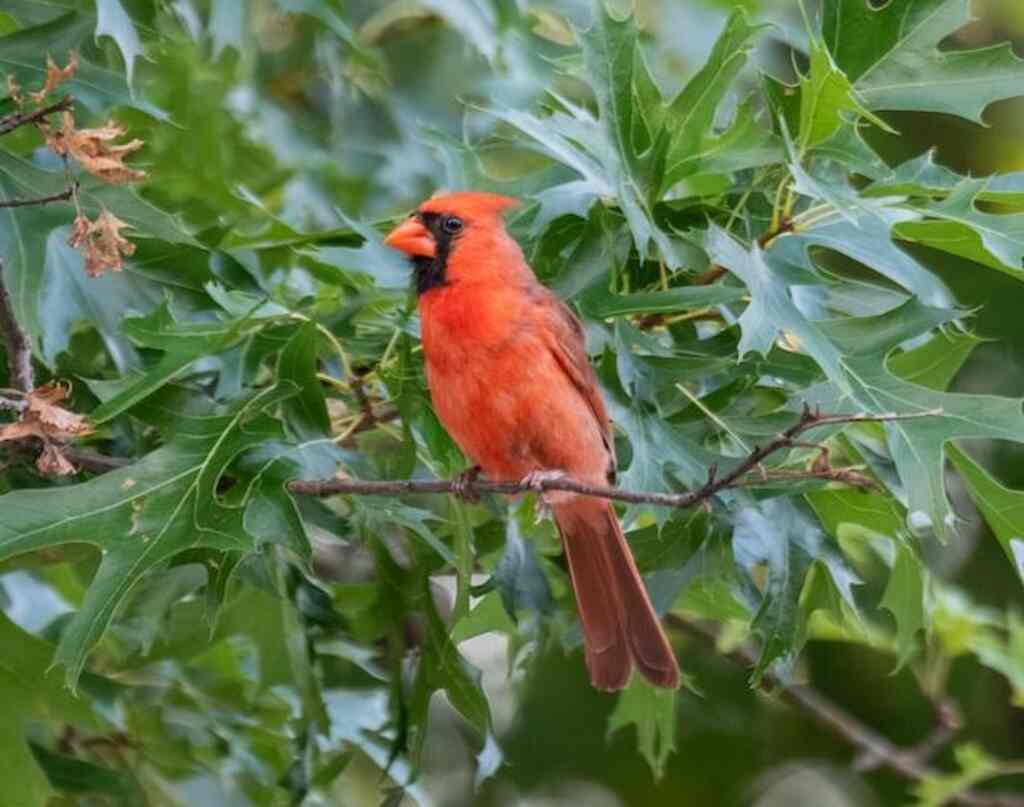
Santee National Wildlife Refuge: A Birdwatcher’s Retreat
Located in Clarendon County, the Santee National Wildlife Refuge offers a diverse range of habitats that attract a variety of bird species in South Carolina. The refuge is situated on the banks of Lake Marion and covers over 15,000 acres of wetlands and bottomland hardwood forests.
Birdwatchers can explore the refuge’s various hiking trails, observation towers, and viewing platforms to spot a wide range of bird species. The refuge is particularly known for its waterfowl, wading birds, and raptors.
| Common Birds Found at Santee National Wildlife Refuge: | Seasons to Visit: |
|---|---|
| American Bittern | Fall, Winter, Spring |
| Wood Duck | Fall, Winter, Spring |
| Great Blue Heron | Year-round |
| Bald Eagle | Year-round |
If you’re planning a visit to the Santee National Wildlife Refuge, be sure to bring your binoculars and a birding checklist for South Carolina to keep track of the different bird species you spot. The refuge also offers guided birding tours and educational programs for visitors.
Conclusion
South Carolina is a haven for birdwatching enthusiasts, offering diverse habitats that attract a wide variety of bird species. From the coastal marshes to the upstate lakes, the state has an abundance of top birdwatching hotspots waiting to be explored.
Whether you are a beginner or an experienced birder, there is something for everyone in South Carolina. The birding destinations highlighted in this article, such as Huntington Beach State Park, Francis Beidler Forest, Savannah National Wildlife Refuge, Botany Bay Plantation Heritage Preserve, Congaree National Park, Cape Romain National Wildlife Refuge, Lake Jocassee, and Santee National Wildlife Refuge, offer unique birdwatching experiences that will leave you in awe.
So grab your binoculars and birding checklist and head out to discover the top birdwatching hotspots in South Carolina. You never know what feathered friends you might find!
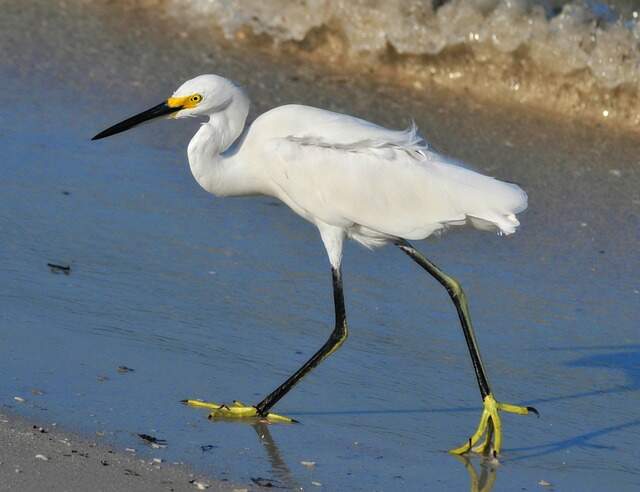
FAQs: Top Birdwatching Hotspots In South Carolina
What are the top birdwatching hotspots in South Carolina?
The top birdwatching hotspots in South Carolina include Huntington Beach State Park, Francis Beidler Forest, Savannah National Wildlife Refuge, Botany Bay Plantation Heritage Preserve, Congaree National Park, Cape Romain National Wildlife Refuge, Lake Jocassee, and Santee National Wildlife Refuge.
Why is South Carolina a great destination for birdwatching?
South Carolina is a great destination for birdwatching because of its diverse habitats, including coastal marshes, forests, wetlands, and lakes, that attract a wide variety of bird species. The state is home to a rich bird population and offers excellent birdwatching opportunities.
What bird species can be observed at Huntington Beach State Park?
Huntington Beach State Park is a birdwatcher’s paradise, with a variety of bird species to observe. Some of the species you might spot there include herons, egrets, shorebirds, warblers, and bald eagles.
What makes Francis Beidler Forest a sanctuary for birds and birdwatchers?
Francis Beidler Forest is a sanctuary for birds and birdwatchers due to its diverse bird population and well-maintained trails and boardwalks that provide excellent birdwatching opportunities. You can find a wide range of bird species, including woodpeckers, owls, warblers, and prothonotary warblers.
What can be seen at Savannah National Wildlife Refuge?
Savannah National Wildlife Refuge is a haven for waterbirds, such as herons, egrets, ducks, and shorebirds. The refuge offers several trails and observation points where you can observe these beautiful birds in their natural habitat.
How is Botany Bay Plantation Heritage Preserve a unique birding experience?
Botany Bay Plantation Heritage Preserve offers a unique birdwatching experience with its coastal preserve and diverse bird species. You can spot a variety of birds, including shorebirds, terns, herons, and warblers. Visitors are advised to follow specific regulations and guidelines to protect the preserve’s natural environment.
What makes Congaree National Park a must-visit birdwatching destination?
Congaree National Park is a must-visit birdwatching destination due to its unique old-growth forests and floodplains, which provide a habitat for various bird species. You can observe birds like woodpeckers, owls, herons, warblers, and the endangered red-cockaded woodpecker. The park offers trails and boardwalks for birdwatching enthusiasts.
Why is Cape Romain National Wildlife Refuge a coastal birdwatching haven?
Cape Romain National Wildlife Refuge is an important coastal birdwatching hotspot in South Carolina. It is home to a wide range of bird species, including nesting seabirds and shorebirds. The refuge offers various trails and birding platforms to observe these birds in their natural habitat.
What bird species can be observed at Lake Jocassee?
Lake Jocassee is a scenic birding destination in the Upstate region of South Carolina. You can observe a variety of bird species around the lake, such as ospreys, bald eagles, herons, and warblers. Specific areas or trails around the lake provide great birdwatching opportunities.
Why is Santee National Wildlife Refuge a birdwatcher’s retreat?
Santee National Wildlife Refuge is a birdwatcher’s retreat in South Carolina due to its diverse habitats, including wetlands and bottomland hardwood forests. The refuge is home to various bird species, such as herons, egrets, woodpeckers, and warblers. There are trails and observation areas available for birdwatching.

